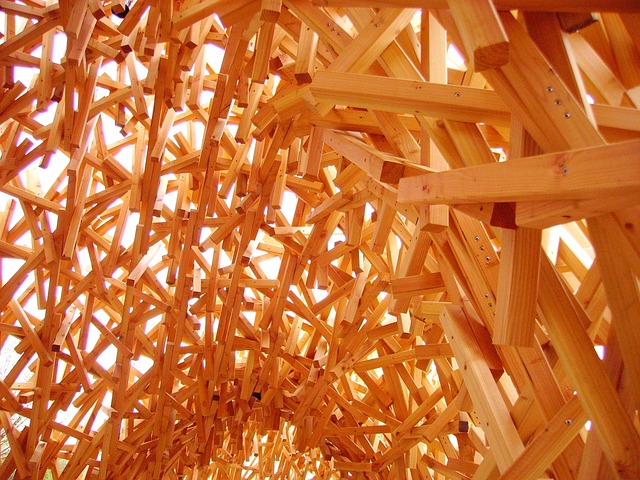Solar energy offers a clean, renewable power source for homes and businesses through environmentally friendly roof installations using solar panels or shingles. The process converts sunlight to DC electricity via photovoltaic (PV) cells, followed by inversion to AC for use. Proper care and professional guidance ensure optimal performance and cost savings. These installations reduce carbon footprints, decrease reliance on fossil fuels, and preserve natural resources, aligning with global stewardship efforts. Regular maintenance is crucial to maximize efficiency over the system's lifespan.
“Considering an environmentally friendly roof installation? This comprehensive guide explores the benefits of solar energy and its potential to revolutionize your home’s sustainability. From understanding the basics of solar panels and their impact on reducing carbon footprints, to choosing the right system for your roof and navigating the installation process, we provide a step-by-step approach. Discover how these installations contribute to a greener planet while offering long-term efficiency and cost savings.”
Understanding Solar Energy: The Benefits and Basics
Solar energy is a clean, renewable power source that harnesses the sun’s rays to generate electricity for homes and businesses. When considering environmentally friendly roof installations, solar panels or shingles offer numerous advantages. They significantly reduce carbon footprints by decreasing reliance on non-renewable energy sources like coal and natural gas. Over time, solar energy can lead to substantial cost savings as utility bills decrease or even disappear entirely.
The basic process involves converting sunlight into direct current (DC) electricity using photovoltaic (PV) cells. This DC power is then inverted into alternating current (AC) for use in homes and businesses. With proper care and maintenance, solar panels can last for decades, ensuring long-term benefits. Moreover, many governments offer incentives and rebates to encourage the adoption of solar energy, making environmentally friendly roof installations more accessible and affordable.
Choosing the Right Solar Panel System for Your Roof
When considering solar panel installation, selecting the right system for your roof is a crucial first step. Different solar panels and shingles are designed to cater to various roofing types, shapes, and sizes. It’s essential to assess your roof’s structural integrity, orientation, and shading potential to ensure optimal performance of your future environmentally friendly roof installations.
Panel or shingle selection should also align with your energy needs and budget. Modern solar panels vary in efficiency, power output, and cost, offering flexible options for tailored solutions. Consult with a professional installer who can guide you through the choices, ensuring the chosen system seamlessly integrates with your roofing infrastructure while maximizing renewable energy generation potential.
The Installation Process: Step-by-Step Guide
The process of installing solar panels or shingles is a multifaceted endeavor, designed to maximize renewable energy generation while ensuring an environmentally friendly roof installation. It begins with a thorough assessment of your roof’s structure and orientation to determine its suitability for solar panels. This includes checking for any damage or weaknesses that might compromise the integrity of the structure during installation. Once approved, the next step involves selecting the right equipment, including high-efficiency solar panels and durable mounting hardware tailored to your roof type.
The actual installation process typically starts with cleaning the roof surface to ensure optimal contact between the panels and sunlight. Mounting hardware is then securely fastened, followed by careful placement of the solar panels themselves. Electrical connections are made, linking the panels to an inverter that converts direct current (DC) energy into alternating current (AC) for use in your home or feeding back into the grid. Throughout the process, safety protocols are rigorously adhered to, ensuring a secure and environmentally friendly roof installation that stands the test of time.
Environmental Impact: Why Eco-Friendly Roof Installations Matter
The choice to install solar panels or shingles goes beyond energy savings; it’s a commitment to environmental stewardship. Environmentally friendly roof installations play a pivotal role in mitigating climate change by reducing carbon footprints significantly. Traditional roofing materials contribute to greenhouse gas emissions and pollution, while solar options offer a sustainable alternative. By harnessing renewable energy from the sun, these installations decrease reliance on fossil fuels, helping to preserve natural resources for future generations.
Moreover, they contribute to a reduction in air and water pollution, as they don’t require the extraction or processing of materials that often have detrimental environmental effects. This approach aligns with global efforts to create a greener, more sustainable world. As such, opting for eco-friendly roof installations isn’t just a smart energy choice; it’s a responsible step towards preserving our planet’s health and biodiversity.
Maintaining Your Solar Panels: Ensuring Long-Term Efficiency
Maintaining your solar panels is crucial for ensuring long-term efficiency and optimal energy generation from your environmentally friendly roof installations. Regular cleaning and inspections are key; dust, dirt, and debris can accumulate over time, blocking sunlight and reducing power output. A simple routine involves washing the panels with a soft brush or hose and checking for any signs of damage, loose connections, or shading issues caused by nearby trees or buildings.
Proactive maintenance also includes monitoring your inverter’s performance and keeping an eye out for unusual energy readings. Most modern solar systems come with monitoring apps that provide real-time data, allowing you to quickly identify any potential problems. Regular trimming of nearby vegetation and reorienting panels as necessary can further optimize performance, ensuring your system continues to provide clean, renewable energy for years to come.
Solar energy offers a sustainable and clean alternative for power generation, making environmentally friendly roof installations increasingly popular. By installing solar panels or shingles, homeowners not only reduce their carbon footprint but also enjoy long-term cost savings on energy bills. With proper maintenance, these systems can provide reliable, renewable energy for years to come, contributing to a greener and more sustainable future.
